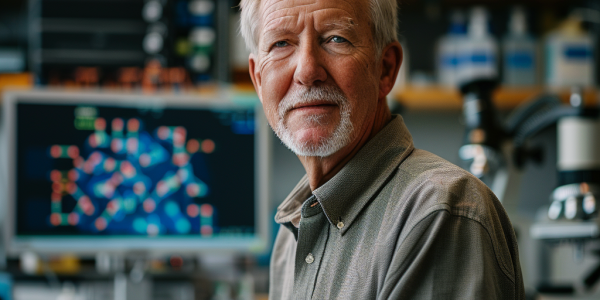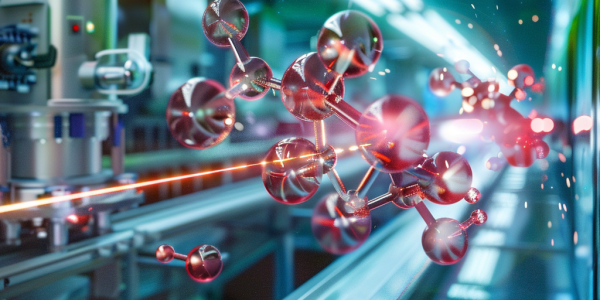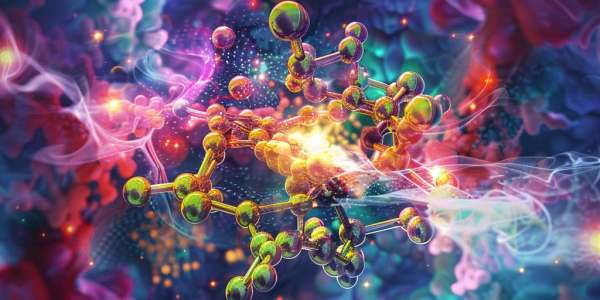New Method Promises Early Detection of High-Altitude Brain Injury
A groundbreaking study published in Angewandte Chemie International Edition reveals a new method for early detection of high-altitude hypoxic brain injury (HHBI). Researchers from Zhejiang University utilized advanced in vivo electrochemistry to monitor brain oxygen levels, providing critical insights into HHBI risk for climbers and residents in high-altitude areas. This innovative approach could revolutionize altitude sickness management, enabling timely interventions and improved health outcomes.
Revolutionary Electron Microscopy Project Aims to Transform Understanding of Chemical Reactions
Researchers from the University of Illinois Chicago have launched the MOSAIC project, backed by a $1.8 million NSF grant, to revolutionize electron microscopy techniques for observing chemical reactions in real-time. This initiative aims to enhance our understanding of atomic interactions and could lead to breakthroughs in materials science, drug development, and nanotechnology.
Nobel Prize Winner John Jumper’s Journey from Physics to Protein Folding Innovation
Nobel Prize winner John Jumper shares his inspiring journey from a physics background to groundbreaking research in protein folding. His development of AlphaFold, a deep learning program, revolutionizes protein structure prediction, offering significant implications for drug discovery and disease treatment. Jumper’s story highlights the importance of interdisciplinary collaboration and the impact of curiosity in scientific advancements.
Research Reveals Protective Role of CO₂ in Cellular Health
Recent research from the University of Utah reveals a surprising role for carbon dioxide (CO₂) in protecting cells from oxidative stress, a key factor in diseases like cancer and neurological disorders. The study shows that bicarbonate from dissolved CO₂ alters the Fenton reaction, reducing harmful DNA damage. This groundbreaking discovery highlights the potential therapeutic benefits of CO₂ in cellular health, challenging its negative perception in climate discussions.
NYUAD Researchers Develop Breakthrough COF for Efficient PFAS Removal from Drinking Water
NYU Abu Dhabi researchers have developed a groundbreaking cationic covalent organic framework (COF) that effectively detects and removes perfluorooctanoic acid (PFOA) from drinking water, addressing the urgent global issue of PFAS contamination. This innovative solution promises to enhance water purification methods, offering a faster and more efficient alternative to traditional technologies, potentially transforming water quality worldwide.
Breakthrough Study Reveals Ultrafast Dissociation of Heavy Molecules
A groundbreaking study at BESSY II reveals the ultrafast dissociation of bromochloromethane molecules under X-ray light, showcasing the ‘molecular catapult effect.’ This research, published in The Journal of Physical Chemistry Letters, enhances our understanding of molecular dynamics and has potential applications in materials science and chemistry.
Navigating Privacy and Scientific Discoveries: From Digital Choices to Early Earth Catalysis
Explore the critical balance between online privacy and user consent in today’s digital landscape, alongside groundbreaking research on iron sulfide’s role in early Earth’s carbon cycles. Discover how optional cookies impact your data privacy and the implications of recent findings on the origins of life and astrobiology.
Navigating Privacy and Scientific Breakthroughs in Nanotechnology
Explore the critical intersection of privacy and nanotechnology advancements in our digital age. Understand the implications of cookie consent on personal data processing and discover groundbreaking research on manipulating single-molecule reactions, paving the way for innovations in pharmaceuticals and materials science.
Breakthrough Study Reveals Mechanisms of CO₂ Reduction Using Ni-N-C Catalysts
A groundbreaking study reveals how nickel and nitrogen co-doped carbon (Ni-N-C) catalysts can effectively convert carbon dioxide (CO₂) into carbon monoxide (CO), offering significant industrial applications for reducing greenhouse gas emissions. Led by the Max Planck Society, researchers employed advanced techniques to uncover the mechanisms behind CO₂ reduction, paving the way for innovative sustainable technologies that transform CO₂ into valuable resources.
KIST Develops Innovative Silver-Silica Catalyst for Enhanced CO₂ Reduction
A groundbreaking study from the Korea Institute of Science and Technology (KIST) reveals a novel silver-silica composite catalyst that enhances CO₂ reduction efficiency. Led by Dr. Hyung-Suk Oh and Dr. Woong Hee Lee, this innovative catalyst maintains nearly 100% selectivity even at high current densities, addressing challenges in carbon capture and utilization technologies. This advancement could revolutionize CO₂ utilization, making it more commercially viable and effective in combating climate change.










